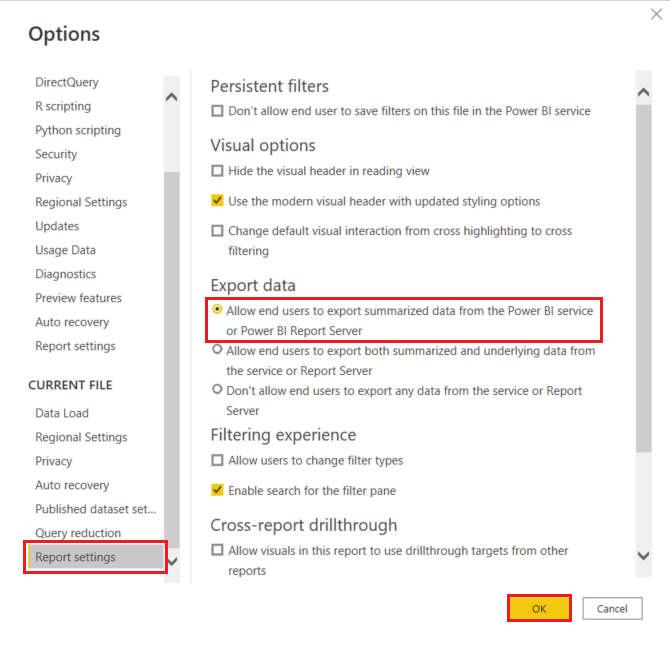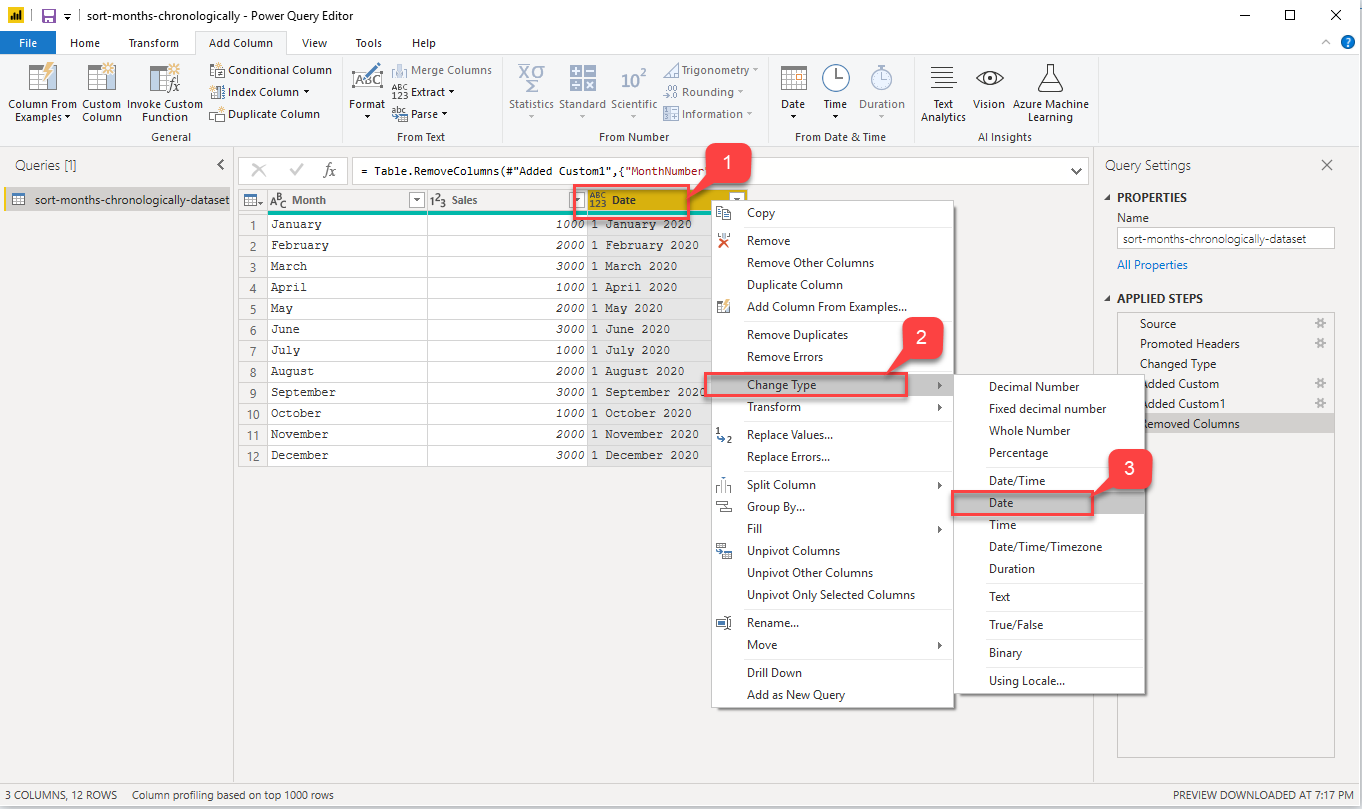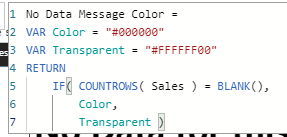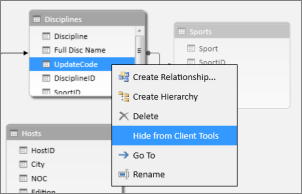How To Hide Columns With No Data In Power Bi
Introduction
Power BI is a powerful data visualization tool that allows users to create compelling reports and dashboards. However, when working with large datasets, it is common to have columns that contain no data. These empty columns can clutter the visualizations and make it difficult for users to focus on the relevant information. In this article, we will explore different methods to hide columns with no data in Power BI, providing a cleaner and more user-friendly experience for report consumers.
Understanding the Data Model in Power BI
Before we dive into the methods of hiding columns with no data, it is essential to understand the data model in Power BI. The data model is the foundation of any Power BI report and consists of tables and columns. Each column contains data that is used to create visualizations.
Step 1: Identifying columns with no data
The first step in hiding columns with no data is to identify which columns have no data. To do this, navigate to the Fields pane in Power BI Desktop. Here, you will see a list of all the tables and columns in your data model. Take note of any columns that appear to have empty or null values consistently.
Step 2: Hiding columns manually
The simplest way to hide columns with no data is to do it manually. In the Power BI Desktop, go to the “Fields” pane, right-click on the column you want to hide, and select “Hide.” This will remove the column from all visuals in the report, making it invisible to the end-users. However, keep in mind that this method is only suitable for a small number of columns as it can be time-consuming to hide multiple columns manually.
Step 3: Using DAX expressions to hide columns dynamically
To hide columns dynamically based on the presence of data, you can use Data Analysis Expressions (DAX) expressions in Power BI. DAX is a formula language that allows you to create custom calculations and measures.
To implement this method, create a measure that checks whether the column contains any data and returns a Boolean value. For example, you can use the following DAX expression:
“`DAX
Column_Has_Data = NOT(ISBLANK([ColumnName]))
“`
Once you have created the measure, use it as a filter in your visuals. This will hide the columns that evaluate to “False,” indicating that there is no data.
Step 4: Creating a measure to hide columns with no data
Another way to hide columns with no data is by creating a measure that evaluates whether a column has any data. Start by creating a measure that counts the distinct values in the column:
“`DAX
RowCount = COUNTA(DISTINCT([ColumnName]))
“`
Next, create a new measure that returns a value of 1 if the RowCount is greater than 0, and 0 if it is equal to 0:
“`DAX
HasData = IF(RowCount > 0, 1, 0)
“`
Finally, use this measure as a filter in your visuals. This will hide the columns where the HasData measure is equal to 0, indicating that there is no data in the column.
Step 5: Applying conditional formatting to hide columns with no data
Conditional formatting is a powerful feature in Power BI that allows you to change the appearance of visuals based on certain conditions. To hide columns with no data using conditional formatting, follow these steps:
1. Select the visual where you want to hide the columns.
2. Go to the “Format” pane and expand the “Conditional formatting” section.
3. Click on the “Data bars” option.
4. Under the “Data colors” dropdown, select “Based on field value.”
5. Choose the column you want to hide from the “Field value” dropdown.
6. Set the “Minimum” and “Maximum” values to 0 and 0, respectively.
7. Adjust the color of the data bars to match the background color of the visual.
This will effectively hide the columns with no data by making them blend into the background.
FAQs:
Q: How can I hide a column in a Power BI table visual?
A: You can hide a column in a Power BI table visual by right-clicking on the column in the “Fields” pane and selecting “Hide.” This will remove the column from the visual.
Q: Can I hide a column in a Power BI table visual based on a slicer selection?
A: Yes, you can hide a column in a Power BI table visual based on a slicer selection. To do this, create a measure that evaluates the selected slicer value and returns a Boolean value. Use this measure as a filter in the visual to hide the column when the condition is not met.
Q: How can I freeze panes in a Power BI table visual?
A: Freeze panes is not currently supported in Power BI table visuals. However, you can freeze panes in Excel if you export the data from Power BI.
Q: Can I hide a column in a Power BI matrix visual?
A: Yes, you can hide a column in a Power BI matrix visual in the same way as in a table visual. Right-click on the column in the “Fields” pane and select “Hide.”
In conclusion, hiding columns with no data in Power BI can significantly improve the usability and clarity of your reports. Whether you choose to hide them manually, dynamically with DAX expressions, or using conditional formatting, the methods described in this article will help you create more effective and user-friendly visualizations.
Hide Columns In Power Bi | Power Bi Tricks \U0026 Tutorials
Keywords searched by users: how to hide columns with no data in power bi Power BI hide column in table visual, Power bi hide column in table visual based on slicer, Freeze panes in Power BI table visual, Hide column in Table Power BI, Matrix in Power BI, Hide column in Matrix Power BI, You can change the visibility of the data in a pivottable in which of these ways
Categories: Top 90 How To Hide Columns With No Data In Power Bi
See more here: nhanvietluanvan.com
Power Bi Hide Column In Table Visual
To hide a column in a table visual, follow these simple steps:
1. Open Power BI Desktop and create or open a report that contains a table visual.
2. Select the table visual where you want to hide a column.
3. In the “Fields” pane, find the column you want to hide and uncheck the checkbox next to it.
4. The column will now be hidden in the table visual.
Hiding columns in a table visual can be beneficial for several reasons. Firstly, it helps to declutter the visual and remove unnecessary information. In many cases, a table visual contains numerous columns, and not all of them are relevant for analysis. By hiding irrelevant columns, users can focus on the essential data and make more informed decisions.
Secondly, hiding columns improves the readability of the visual. When a table visual contains too many columns, it becomes overcrowded, making it difficult to interpret the data effectively. By selectively hiding columns, users can create a cleaner and more organized table visual, making it easier to understand and analyze the information.
Thirdly, hiding columns allows users to reveal or conceal specific data based on their audience. In some cases, there might be sensitive information that should not be visible to all viewers. By hiding certain columns, users can control the visibility of sensitive data and ensure it is only accessible to authorized individuals.
Furthermore, hiding columns can also be useful when creating drill-through actions. Drill-through actions enable users to navigate from one report to another to examine additional details. By hiding certain columns in the drill-through report, users can provide a summarized view of the data without overwhelming the audience with unnecessary details.
Now, let’s address some frequently asked questions regarding hiding columns in Power BI:
Q: Can I still use the hidden columns in calculations?
A: Yes, hiding a column in a table visual does not affect its availability for calculations. Hidden columns can still be used in measures, calculated columns, or other calculations within Power BI.
Q: How can I unhide a column in a table visual?
A: To unhide a column, go to the “Fields” pane, find the hidden column, and check the checkbox next to it. The column will then appear in the table visual.
Q: Can I hide multiple columns at once?
A: Yes, you can hide multiple columns simultaneously in Power BI. Simply uncheck the checkboxes next to the columns you want to hide in the “Fields” pane.
Q: Will hiding a column affect the underlying data model?
A: No, hiding a column in a table visual does not affect the underlying data model or the data itself. It only affects the visibility of the column in the specific visual.
Q: Can I hide columns in other types of visuals, such as charts?
A: No, hiding columns is specific to table visuals in Power BI. In other visuals, you might need to remove or modify the fields used to create the visual.
In conclusion, hiding columns in Power BI table visuals is a valuable feature that helps users declutter their visuals, improve readability, and control the visibility of sensitive data. By selectively hiding columns, users can focus on the relevant information, create more organized visuals, and make better data-driven decisions.
Power Bi Hide Column In Table Visual Based On Slicer
Creating a table visual in Power BI is relatively straightforward. You start by selecting the “Table” visualization from the Visualization pane. Then, you drag and drop the desired fields onto the “Values” section of the Fields pane. The table visual will automatically generate columns based on the fields chosen.
Once you have your table visual set up, you can utilize slicers to filter and interact with the data. Slicers act as filters for the entire report, and they allow users to choose specific values or ranges. By connecting a slicer to your table visual, you can dynamically change the displayed columns based on the selections made in the slicer.
To hide or show columns in a table visual based on slicer selections, follow these steps:
1. Create a slicer visual by selecting the desired field(s) from the Fields pane and dragging them onto the canvas.
2. Select the table visual where you want to apply the hiding/showing functionality.
3. In the Visualizations pane, go to the “Format” section.
4. Expand the “Column headers” tab to display the available customization options.
5. Find the “Column width” section and click on the dropdown arrow to reveal the options.
6. In the dropdown menu, select “Advanced”.
7. A new dialog box will appear, displaying a list of available columns in the table visual.
8. Go through the list and find the columns that you want to hide based on slicer selections.
9. Select the column you wish to hide, and in the “Expression” text box, provide the desired formula.
10. The formula should evaluate to “true” or “false” based on slicer selections. For example, if you named your slicer “Product Type” and want to hide a column named “Sales for Product A”, you can use the formula: [Product Type] <> “Product A”.
11. Repeat steps 9 and 10 for each column you want to hide based on slicer selections.
12. Click “OK” to apply the changes.
Your table visual will now hide or show columns based on the slicer selections. This functionality enables users to have a more focused and dynamic view of their data, highlighting relevant information while eliminating unnecessary clutter.
FAQs:
Q: Can I apply this feature to other visualizations in Power BI?
A: Unfortunately, hiding or showing columns based on slicer selections is currently only available for table visuals.
Q: Can I apply multiple slicers to achieve more complex column hiding/showing?
A: Absolutely. Power BI allows you to connect multiple slicers to a table visual, and columns will be hidden or shown based on the selections made in each slicer simultaneously.
Q: Can I hide calculated columns using this feature?
A: Yes, you can hide calculated columns in a table visual based on slicer selections. Simply include the calculated columns in the list of available columns in step 7 of the guide, and apply the desired expression in step 9.
Q: Is it possible to show all columns by default and hide some based on slicer selections?
A: Yes, it is possible to invert the logic and show all columns by default. To achieve this, provide the expression “true” in step 9 for all columns you want to show initially, and “false” for the columns you want to hide.
Q: Can I dynamically rename columns based on slicer selections?
A: Unfortunately, Power BI currently does not provide a native feature to dynamically rename columns based on slicer selections. However, you can achieve this using calculated columns and measures by referencing slicer selections in conditional logic.
In conclusion, Power BI’s ability to hide or show columns in a table visual based on slicer selections adds a level of interactivity and personalization to data analysis. By following the step-by-step guide provided in this article, users can easily implement this feature and tailor their visuals to showcase the most relevant information for their reports.
Images related to the topic how to hide columns with no data in power bi

Found 50 images related to how to hide columns with no data in power bi theme


















































Article link: how to hide columns with no data in power bi.
Learn more about the topic how to hide columns with no data in power bi.
See more: nhanvietluanvan.com/luat-hoc